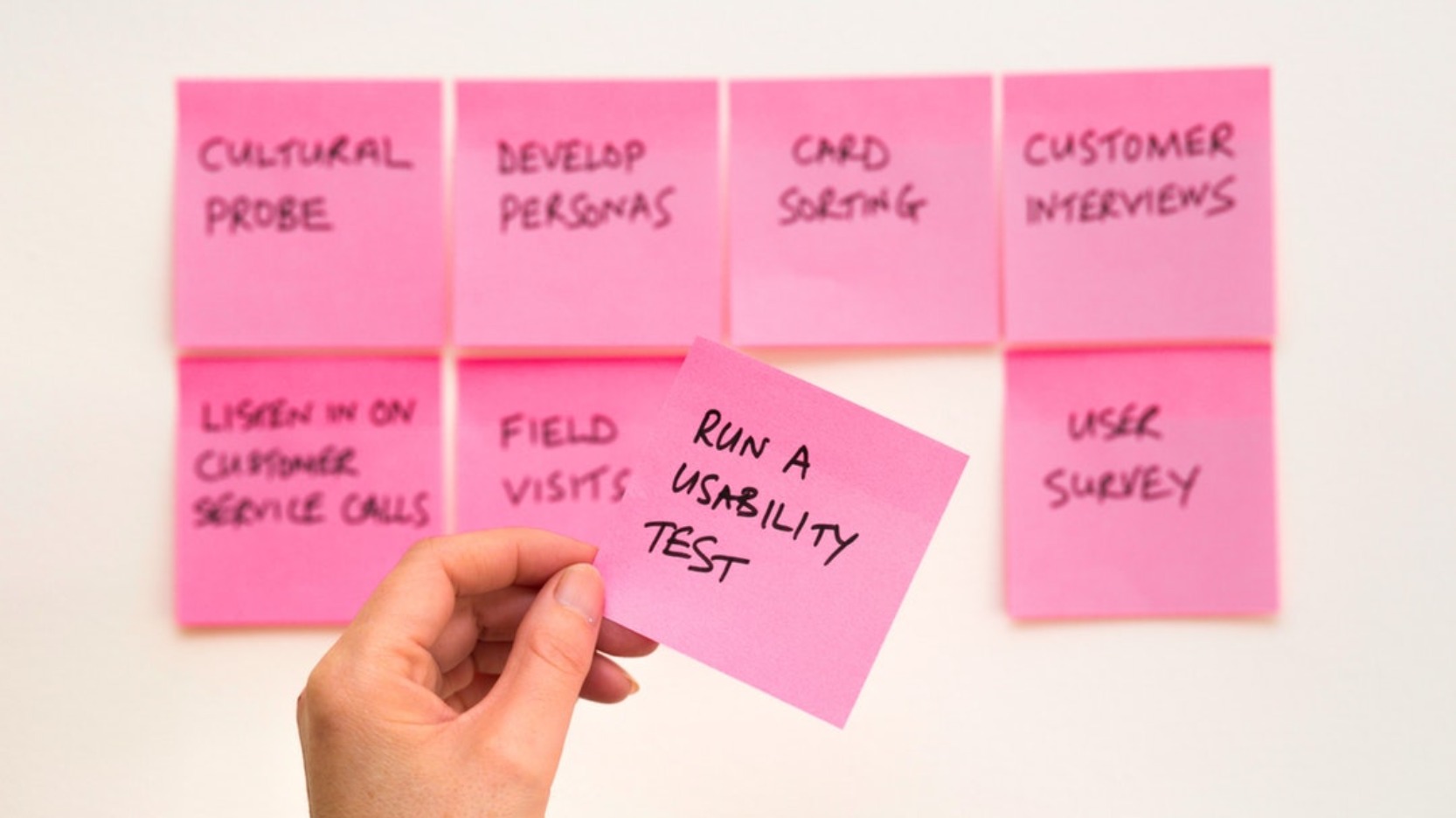UI Designs to Watch for in 2024
One of the best UI trends involves creating experiences instead of simply selling, and that will continue to drive innovation into 2018. Long-form content will increasingly encourage scrolling below the fold. A full-screen video will enable impactful storytelling. Gradient use will provide colours with even more impact. Cards will become even more popular when designers need to share large amounts of information in a small space. Staying on the cutting edge of UI design will give you an advantage you can’t afford to ignore.
Quick Links
Content Delivers What Users Are Looking For
When a user types in a search, it’s usually brief, a summary of the sort of information they are looking for. If you do a web search for “long-form content,” it’s likely you are looking for information about what size content performs best, what sort of information best fills out that content, how to make the long-form content more appealing than just a wall of text, and much more. If the first result you hit gives you just one of those answers, you are left feeling unsatisfied and go searching elsewhere for more answers
The solution to your user’s problem is to provide long-form content that provides everything they are looking for in one package. Data suggests that 2,000 and even 3,000 word posts are optimal for delivering answers your users are looking for and keeping them glued to your site longer. This is beneficial for you and the user.
The keys to creating long-form content that delivers a quality UI experience is to make the content scannable, find evergreen content ideas, and ensure your content is authoritative and well-researched
As the benefits of long-form content become more widely known and accepted, their use will continue to grow in 2018. Google searches already tend to favour long-form content both for organic reasons and through Google’s algorithms. It’s likely that Google will continue to reinforce that trend over the coming year.
Full Immersion Video
Video continues to dominate as a major attraction for users and content developers. Nothing quite captures and holds users’ attention like a quality video production. Telling your story quickly is not only advantageous for marketers trying to communicate clearly in a busy world, but is advantageous for users as they fight through the noise to find the answers they’re searching for.
A full-screen video provides a more immersive experience that limits the distractions and allows a simpler, more effective means of communication. Live video-streaming provides a more personal and organic feel that benefits greatly from capturing the whole screen and holding attention. Live video has been shown to hold users’ attention longer than on-demand videos. When you combine that with a full-screen experience, you immerse the users in your presentation more thoroughly than any other medium currently available.
The key to producing attractive full-screen video is to provide interesting, quality content that people are interested in following. You must provide multiple video quality options if you want mobile users to be able to stay engaged. The full-screen experience means there is more opportunity for the user to notice flaws in appearance or background-setting than on a smaller screen. Pay attention to detail and reel-in attention in 2018 by incorporating more full-screen, immersive video.
Viva La Color!
The muted tones and palette of previous years seems to be giving way to brighter, bolder choices. There is a growing movement away from the flat design trend. One common characteristic of flat design is the absence of a colour gradient. This trend is already slipping with big names such as Spotify, WordPress, and Instagram bringing the gradient back.
Facebook introduced gradient backgrounds for some posts in 2017, and these eye-catching posts highlight the users’ desire for the colour gradient. If the user interface is about putting the user’s needs first, then colour gradient is sure to continue to grow this year.
Designers will no doubt enjoy the opportunity to add style and colour back to their designs. Keeping the designs understated rather than distracting is a key to ensuring the images don’t overshadow the content. Focus on alluring and eye-catching gradients that draw the user in, and focus their attention on the product.
Card-Based Design Continues to Rise
Cards are already in-use but remain an area poised to explode in 2018. Mobile-first is now a reality with responsive web design and a must in all applications. One of cards’ chief advantages is the ability to present large amounts of information in a small amount of screen space. For this reason, cards have been used effectively in mobile platforms to break up the screen and provide a content-rich environment for the user.
Where cards’ potential is really beginning to make itself felt is in customizing cards based on the user. Personalization is the backbone of an effective UI, and as designers become more proficient in mining rich veins of user information and preferences, cards can be customized to present tailored information. The opportunities for personalization through cards is still largely untapped, but the potential is astronomical, and designers are learning how to best take advantage of this opportunity.
Cards should maintain a simplicity of design that is able to tell a short story in an efficient way. A combination of images and targeted text conveys a great deal of information and prompts users to examine the card to find more in-depth information. Avoid the temptation to communicate too much through the card and allow them to be the gateway to providing deeper content.
Responsive design is key to making websites look great across all platforms, yet cards are sometimes overlooked in this process. Make sure your cards can respond to different user environments just as the rest of your content does.
Readability is also key for developing cards well. Watch the typeface and stick with fonts and designs that are easy to read over the allure of more outlandish choices. There is a place for swirling, cursive-like fonts, but the card is most definitely not it.
Keeping the Objective in Mind
Not all trends live up to their apparent potential. Some trends are more like fashion choices, and investing heavily in these fads has wrecked more than one great marketing strategy. Take a common-sense approach to following the trends, and don’t allow a current fad to dominate your entire UI strategy.
With that warning in mind, failing to stay on top of the most promising trends can leave your UI looking outdated and unattractive. As a society, we become bored easily, and anything out of fashion can seem tired and unappealing. Worse yet, falling behind in UI can subconsciously communicate that your product and services are far behind, causing you to lose credibility in the market.
The key is to balance these factors. Few UI trends will ever need to become the sole focus of your organization. Unless your company is YouTube, video will likely be a key part of your strategy in UI, but not the dominating component. Charge ahead in several areas of improvement without letting any particular trend overcome prudence and experience.
These trends are certain to make an impact in 2018, and by smartly taking advantage of the opportunities presented, your company will be poised to step ahead of the competition.
 Stephen Moyers is an online marketer, designer, avid tech-savvy blogger. He is associated with Los Angeles Web Design Agency – SPINX Digital. He loves to write about web design, development, digital marketing, social media and much more. Apart from writing, he loves travelling & photography. Follow Stephen on Twitter & Google+.
Stephen Moyers is an online marketer, designer, avid tech-savvy blogger. He is associated with Los Angeles Web Design Agency – SPINX Digital. He loves to write about web design, development, digital marketing, social media and much more. Apart from writing, he loves travelling & photography. Follow Stephen on Twitter & Google+.
What Is WooCommerce Product Slider and Why Your Store Needs It
Why Do Product Images Matter So Much in Online Stores? When someone visits an online store the…
0 Comments9 Minutes
How to Streamline Your Customers’ Shopping Experience?
The goal for any online store is to make shopping as smooth as possible. When visitors move…
0 Comments8 Minutes
Strengthening Brand-Customer Relationships Through Gamified Loyalty Programs
Creating lasting connections with customers has become increasingly vital as the marketplace grows…
0 Comments6 Minutes
How to Use SEO and SEA Together in Search Engine Marketing
In digital marketing, search engine marketing (SEM) plays a critical role in improving online…
0 Comments10 Minutes
Content Marketing Growth Hacks: Real Shortcuts to Drive Traffic
Are you still lagging in content marketing? Sticking to these old strategies seems…
0 Comments10 Minutes
How to Build a Strong Local Following Using Social Media Marketing
In the days of likes, shares, and stories, local businesses have a golden opportunity to create…
0 Comments9 Minutes
Why WooCommerce is the Best Choice for Your Online Store?
WooCommerce stands out as a top option for anyone looking to build an online store. This platform…
0 Comments8 Minutes
How to Use AI-Powered SEO Tools for WordPress eCommerce
SEO is a critical factor in the success of any e-commerce WordPress store. As competition…
0 Comments11 Minutes








